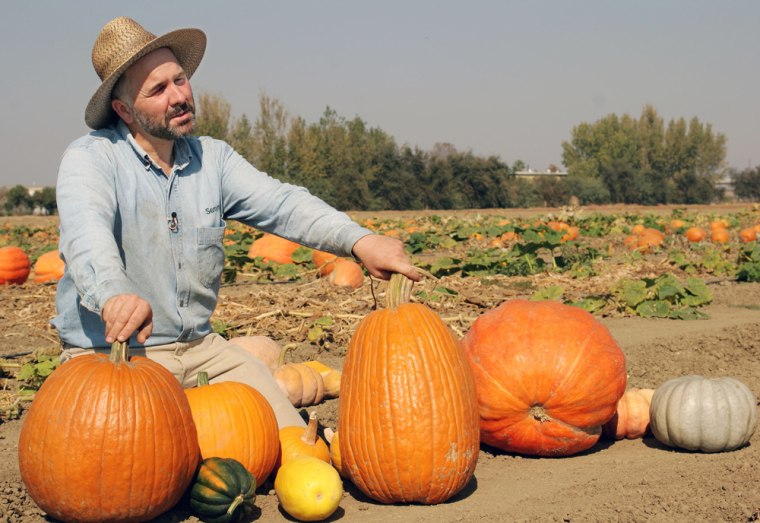Monsanto Co. scientist Bill Johnson is trying to breed the perfect pumpkin peduncle.
Stout and dark green, the modern-day peduncle, known as a stem outside the plant breeding world, is the result of decades of intensive breeding, Johnson said.
The goal: making the perfect jack-o'-lantern lid.
"If you look at the really old (pumpkin) varieties, their peduncles were really lame compared to the peduncles that are out there now," Johnson said.
Better known around the world for its genetically engineered commodity crops such as corn and soybeans, Monsanto got into the pumpkin business last year when it purchased Oxnard, Calif.-based Seminis Inc.
Seminis, the world's biggest fruit and vegetable seed company, had a long-running pumpkin patch breeding program, Johnson said. The company sells about a dozen breeds of Halloween pumpkin seeds that bear fruit ideally shaped for carving and decorating.
Pumpkins are big business in the United States, according the U.S. Department of Agriculture. Production has steadily increased since 2002, with about 1.5 billion pounds of pumpkins sold last year.
The crop, which is mostly sold around Halloween, was worth about $106 million in 2005, according to the Agriculture Department.
Johnson said pumpkins are grown throughout the United States, but most production is concentrated in the so-called Pumpkin Belt, an area that stretches from Illinois to New Hampshire and as far north as Ontario, Canada.
The crop does well in northern latitudes where harsh winters kill the pests and fungus that can plague it, Johnson said. While some of the crop goes to processing plants that make pumpkin pie, the majority of sales come from Halloween shoppers looking for a jack-o'-lantern, he said.
Johnson said customers want deep orange colors and dark green stems that don't snap off when you use them to carry the pumpkin. His job is to breed varieties with those qualities with other strains that are resistant to certain viruses or the dreaded powdery mildew.
Monsanto has thousands of breeding lines of pumpkin stock, Johnson said. Most the work is done in California and Florida greenhouses using traditional breeding techniques of mating the best plants with one another over generations.
Monsanto's critics call genetically engineered crops Frankenfoods. In spite of the natural appeal such a label might have for Halloween sales, Johnson said there aren't any plans to splice pumpkin genes.
"It's not something that's on the radar right now," he said.
